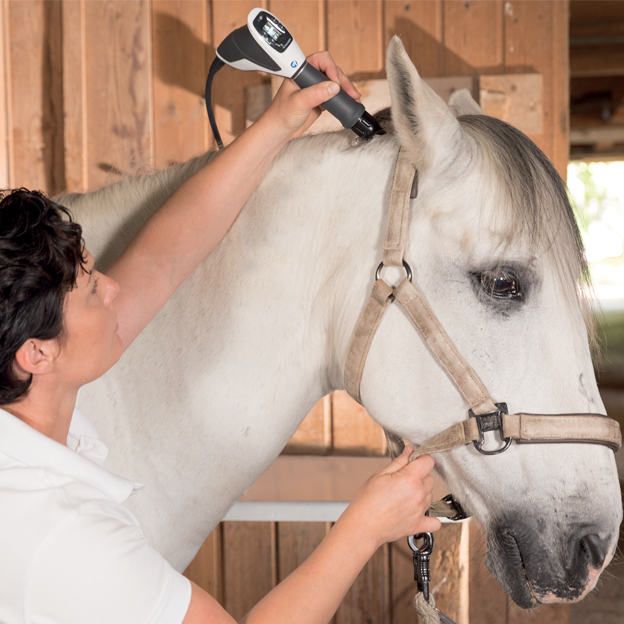Exploring the Holistic Approach of Equine Therapy for Personal Growth
Exploring the Holistic Approach of Equine Therapy for Personal Growth
Blog Article
Assessing the Effectiveness of Laser Treatment in Horse Treatment for Injury Rehabilitation
The assessment of laser treatment's efficiency in equine injury rehab pivots on several factors, including recovery time, pain reduction, and cells regeneration. Vets often observe premium end results with laser therapy compared to standard approaches, placing it as an important component in equine care.
Recognizing Laser Treatment
Laser therapy has come to be an essential device in vet medication, specifically in the treatment of equine conditions. Understood for its non-invasive nature and effectiveness, laser treatment involves the application of details wavelengths of light to boost tissue repair work and lower inflammation. This restorative method is increasingly favored for its capacity to increase the recovery procedure in equines struggling with a range of musculoskeletal injuries and chronic conditions.
The primary device behind laser treatment is its ability to boost mobile functions. When laser light passes through the skin, it is soaked up by mitochondria, the powerhouse of cells, which leads to boosted manufacturing of adenosine triphosphate (ATP) This biochemical power boost assists in mobile repair and regrowth. Additionally, laser treatment promotes vasodilation, improving blood circulation and oxygen delivery to damaged tissues, hence speeding up healing.
In equine medication, laser therapy is particularly valuable for problems such as tendonitis, osteo arthritis, and wound recovery. The strategy is lauded for its pain-relieving properties, allowing horses to gain back movement and feature much more rapidly. Vets additionally value its marginal negative effects compared to various other therapy modalities, making it a trusted and secure alternative for equine treatment.

How Laser Therapy Works

Upon absorption, these photons set off a collection of biochemical modifications, improving mitochondrial feature and resulting in boosted adenosine triphosphate (ATP) production. This surge in ATP accelerates cellular metabolic process, promoting cells repair service and regeneration. In addition, laser treatment modulates inflammatory actions by impacting cytokine degrees and minimizing oxidative stress and anxiety, thereby minimizing pain and swelling.
An additional significant facet of laser therapy is its duty in enhancing microcirculation. The treatment advertises vasodilation, improving blood flow and oxygen distribution to damaged tissues (Equine Therapy). This promotes the removal of cellular particles and supports the spreading of fibroblasts and collagen synthesis, essential for wound recovery
Scientific Evidence
The efficiency of laser therapy in equine treatment has actually been validated through numerous scientific research studies, additional reading showcasing its restorative prospective across a range of conditions. A research study carried out by Turner et al. (2012) showed that steeds treated with low-level laser treatment (LLLT) for ligament injuries showed sped up recovery contrasted to those getting standard treatments.
In a similar way, research by Johnson and coworkers (2015) focused on equine muscle injuries, revealing that laser therapy dramatically expedited muscle mass fiber regrowth and minimized muscle rigidity. These searchings for were supported by histological analyses showing improved muscle tissue organization. Clinical evaluations have actually revealed that laser treatment can reduce persistent problems such as osteo arthritis. A study by Smith et al. (2018) reported that equines with osteoarthritic joints experienced notable discomfort alleviation and enhanced series of movement following a program of laser treatment sessions.
Vet Insights

Veterinarians additionally value the convenience of laser treatment. She aims out that laser treatment can be customized to the specific requirements of each equine, making sure ideal end results.
Furthermore, vets value the ability to incorporate laser therapy with other treatment techniques. This multimodal technique can improve total treatment efficiency, supplying a thorough remedy for equine recovery. Such recommendations from seasoned specialists highlight the expanding approval and application of laser therapy in equine medicine.
Practical Considerations
An essential facet of implementing laser treatment in equine therapy involves recognizing the useful considerations that ensure its effectiveness and safety and security. It is important to choose the proper laser gadget, as different kinds differ in wavelength, power, and penetration depth. Vets have to be well-versed in these parameters to tailor therapy protocols effectively per injury type
Additionally, the frequency and duration of laser therapy sessions require careful planning to make check out here the most of healing advantages while decreasing any possible unfavorable impacts. Regular monitoring of the steed's response to therapy can direct required adjustments in the therapy routine. Developing a safe and regulated setting throughout treatments is also necessary to avoid accidental direct exposure to laser exhausts, which can harm both the equine and the trainer.
Training and accreditation of employees administering laser therapy are vital to make certain appropriate strategy and to support safety and security standards. In addition, maintaining precise documents of each session, including laser setups and observed outcomes, is important for assessing the total effectiveness of the therapy and for making data-driven choices.
Verdict
Laser therapy has actually emerged as an effective technique in equine injury recovery, using significant advantages in recovery time, discomfort relief, and tissue healing. For ideal outcomes, continual monitoring and individualized therapy methods stay crucial in leveraging the complete potential of laser therapy in equine treatment.
Report this page